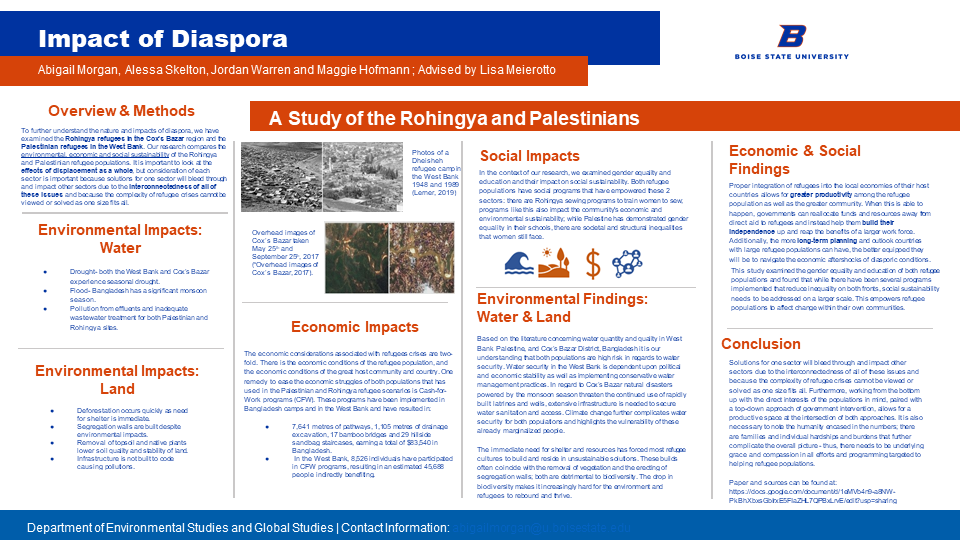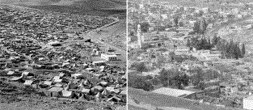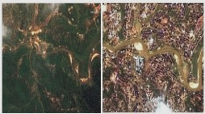A Study of the Rohingya and Palestinians
Abigail M. Morgan, Margaret Hofmann, Alessa Skelton, Jordan Warren, Dr. Lisa Meierotto

Overview & Methods
To further understand the nature and impacts of diaspora, we have examined the Rohingya refugees in the Cox’s Bazar region and the Palestinian refugees in the West Bank. Our research compares the environmental, economic and social sustainability of the Rohingya and Palestinian refugee populations. It is important to look at the effects of displacement as a whole, but consideration of each sector is important because solutions for one sector will bleed through and impact other sectors due to the interconnectedness of all of these issues and because the complexity of refugee crises cannot be viewed or solved as one size fits all.
Environmental Impacts: Water
- Drought- both the West Bank and Cox’s Bazar experience seasonal drought.
- Flood- Bangladesh has a significant monsoon season.
- Pollution from effluents and inadequate wastewater treatment for both Palestinian and Rohingya sites.
Environmental Impacts: Land


- Deforestation occurs quickly as need for shelter is immediate.
- Segregation walls are built despite environmental impacts.
- Removal of topsoil and native plants lower soil quality and stability of land.
- Infrastructure is not built to code causing pollutions.
Economic Impacts
The economic considerations associated with refugees crises are two-fold. There is the economic conditions of the refugee population, and the economic conditions of the great host community and country. One remedy to ease the economic struggles of both populations that has used in the Palestinian and Rohingya refugee scenarios is Cash-for-Work programs (CFW). These programs have been implemented in Bangladesh camps and in the West Bank and have resulted in:
- 7,641 metres of pathways, 1,105 metres of drainage excavation, 17 bamboo bridges and 29 hillside sandbag staircases, earning a total of $83,540 in Bangladesh.
- In the West Bank, 8,526 individuals have participated in CFW programs, resulting in an estimated 45,688 people indirectly benefiting.
Social Impacts
In the context of our research, we examined gender equality and education and their impact on social sustainability. Both refugee populations have social programs that have empowered these 2 sectors: there are Rohingya sewing programs to train women to sew; programs like this also impact the community’s economic and environmental sustainability; while Palestine has demonstrated gender equality in their schools, there are societal and structural inequalities that women still face.
Environmental Findings: Water & Land
Based on the literature concerning water quantity and quality in West Bank Palestine, and Cox’s Bazar District, Bangladesh it is our understanding that both populations are high risk in regards to water security. Water security in the West Bank is dependent upon political and economic stability as well as implementing conservative water management practices. In regard to Cox’s Bazar natural disasters powered by the monsoon season threaten the continued use of rapidly built latrines and wells, extensive infrastructure is needed to secure water sanitation and access. Climate change further complicates water security for both populations and highlights the vulnerability of these already marginalized people.
The immediate need for shelter and resources has forced most refugee cultures to build and reside in unsustainable solutions. These builds often coincide with the removal of vegetation and the erecting of segregation walls; both are detrimental to biodiversity. The drop in biodiversity makes it increasingly hard for the environment and refugees to rebound and thrive.
Economic & Social Findings
Proper integration of refugees into the local economies of their host countries allows for greater productivity among the refugee population as well as the greater community. When this is able to happen, governments can reallocate funds and resources away from direct aid to refugees and instead help them build their independence up and reap the benefits of a larger work force. Additionally, the more long-term planning and outlook countries with large refugee populations can have, the better equipped they will be to navigate the economic aftershocks of diasporic conditions
This study examined the gender equality and education of both refugee populations and found that while there have been several programs implemented that reduce inequality on both fronts, social sustainability needs to be addressed on a larger scale. This empowers refugee populations to affect change within their own communities.
Conclusion
Solutions for one sector will bleed through and impact other sectors due to the interconnectedness of all of these issues and because the complexity of refugee crises cannot be viewed or solved as one size fits all. Furthermore, working from the bottom up with the direct interests of the populations in mind, paired with a top-down approach of government intervention, allows for a productive space at the intersection of both approaches. It is also necessary to note the humanity encased in the numbers; there are families and individual hardships and burdens that further complicate the overall picture – thus, there needs to be underlying grace and compassion in all efforts and programming targeted to helping refugee populations.
Additional Information
For questions or comments about this research, access full paper and sources or contact Abigail Morgan at abigailmorgan@u.boisestate.edu.